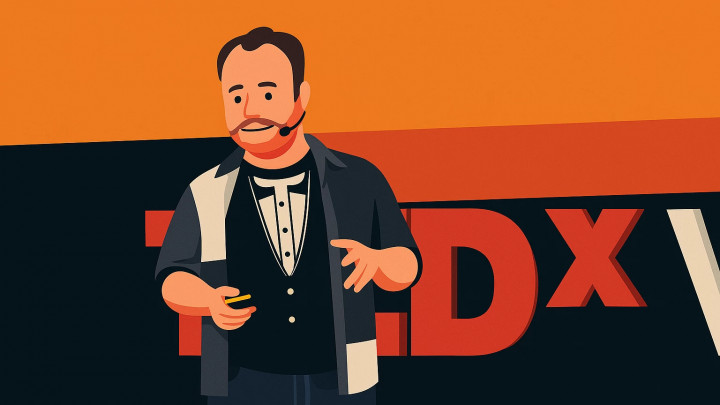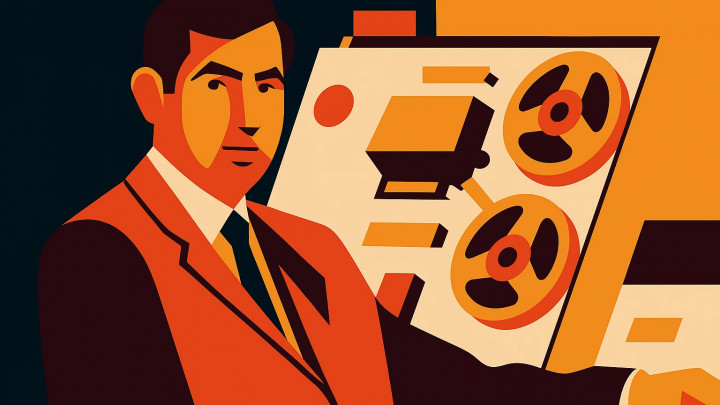The Power of Context: Why Your Brain Remembers Stories, Not Just Words
Have you ever spent hours memorizing a long list of vocabulary, only to find that when you need to use a word in a real conversation, your mind goes blank? It's an incredibly common and frustrating experience, and there's a simple reason for it: your brain isn't a dictionary designed to store isolated facts. It's a complex network built on connections and associations.

This is precisely why a method known as contextual learning represents a paradigm shift in language acquisition. But what does this scientific-sounding term actually mean? Simply put, it means learning a language not as a collection of separate items (words, rules), but within its natural environment—embedded in real-life situations, stories, and dialogues.
In this article, we'll dig deeper. We’ll explore the science behind why this is the most brain-friendly approach and demonstrate how Vocafy provides a complete, all-in-one ecosystem to help you apply it effectively every single day.
Behind the Scenes: The Science of Why Contextual Learning Works
When you learn a word in its natural environment, your brain performs a much more complex and robust task than simple memorization. It forges powerful connections and mental anchors that become crucial for quick and accurate recall later on.
- Schemas and Mental Networks: Our brains organize information into what psychologists call schemas—comprehensive mental frameworks. When you learn the word "bank" in a story about withdrawing money, your brain doesn't just record the word; it captures the entire situation: the building, the teller, the transaction, the atmosphere, your goal. The word "bank" becomes part of a rich, multi-connected network, not an isolated, easily lost data point.
- Dual Coding Theory: The Alliance of Image and Word: Pioneering research by psychologist Allan Paivio revealed that our memory is dramatically enhanced when we encode information through two channels simultaneously: visually (as an image) and verbally (as a word). Attaching a picture—whether it's an AI-generated illustration, a photo you upload, or even a quick hand-drawn sketch—to a word creates a second, extremely powerful anchor in the brain. Vocafy leverages this principle by allowing you to pair every word or phrase with an image.
- Active Recall and Conquering the Forgetting Curve: Actively trying to retrieve information is orders of magnitude more effective than passively reviewing it. Hermann Ebbinghaus's famous "forgetting curve" showed us the alarming speed at which we forget. The most effective antidote to this problem is the Spaced Repetition System (SRS). By quizzing you on words at increasing intervals—precisely at the moment you're about to forget them—it transfers knowledge from your short-term to your long-term memory. Vocafy's built-in SRS and flashcard features put this scientific principle directly into practice.
The Tangible Benefits: What You Gain from Contextual Learning
- True Understanding, Not Just Memorization: Context helps you grasp the subtle nuances of words, cultural references, and appropriate usage. The dozens of meanings for the English verb "run" (to jog, to operate, to manage, to leak) only become clear in real-life sentences.
- Confident and Fluent Communication: Instead of struggling to assemble a sentence from grammar rules and vocabulary lists, phrases learned in context will "pop" into your head as complete chunks. This results in far more natural, seamless speech.
- Durable, Long-Term Knowledge: Because this method of learning creates emotional, cognitive, visual, and auditory connections, the knowledge you acquire is stored much more deeply and permanently.
The Complete Learning Cycle with Vocafy: A Practical Guide
Vocafy is more than just an app; it's an integrated system that guides you through the entire language-learning journey, from discovery and practice to real-world application.
Step 1: Discovery – Acquiring Learning Material Effortlessly
The days of hunting for vocabulary are over. Found an interesting article about your hobby, a YouTube video transcript, song lyrics, or a movie script? Simply paste it into Vocafy. The app's artificial intelligence will analyze it in seconds, extract the key vocabulary you likely don't know, and instantly create an interactive collection for you, complete with example sentences and explanations.
Step 2: Enrichment – Deepening Your Learning with Multiple Senses
In Vocafy, a word is never just a word. Every single item in your collection is a rich, multi-sensory mini-lesson:
- Context: The original sentence where the word appeared, so you can see it in actual use.
- Audio: Native-quality, clear pronunciation to perfect your listening comprehension and accent.
- Imagery: Leverage the power of Dual Coding. Generate an image with Vocafy AI, upload your own, or even draw one right in the Vocafy to visually cement the meaning in your mind.
Step 3: Practice – Solidifying Your Knowledge with Smart Tools
Your collections are dynamic tools in your hands. Use them with the most effective techniques:
- Spaced Repetition System (SRS): Let Vocafy quiz you based on the scientific principles of the forgetting curve to maximize your learning efficiency.
- Flashcard Mode: Test your knowledge with the classic, time-tested card method.
- Listening & Shadowing: Listen to your collections on the go (on the bus, at the gym) and repeat the words and sentences out loud to master pronunciation and achieve linguistic fluency.
Step 4: Application – Testing Your Knowledge Safely in the Real World
This is where one of Vocafy's most innovative features comes into play: the AI language tutor. This isn't a simple chatbot; it's a personal AI language teacher that:
- Actively weaves the vocabulary from your collections into the conversation, so you can see them used live.
- Provides immediate, constructive feedback and, if you choose, corrects your grammatical mistakes.
- Gives you a space to apply what you've learned in a realistic setting, but in a supportive, judgment-free, and safe environment before you talk to real people.
Common Questions and Pitfalls – The Vocafy Solutions
- "It seems too difficult and overwhelming for beginners."
Vocafy offers two solutions for this. First, the built-in frequency-based word lists help you start with the most essential, commonly used vocabulary. Second, thanks to community collections, you can download and use beginner-level materials that have already been curated by other, more experienced users. - "I don't have time to spend hours creating study materials."
Vocafy's artificial intelligence is designed to lift this exact burden from your shoulders. With the automatic text-analysis feature, the time spent on manual dictionary lookups and collection building is reduced to a fraction of what it once was. This frees up your time for what matters most: actual learning.
Final Thoughts
Contextual learning isn't a trendy new fad; it's the way our brains are naturally wired to acquire language. Instead of working against your brain by memorizing isolated facts, you can work with it.
And Vocafy is the tool that elevates this method into a complete, all-in-one, and personalized system. From discovering new words to memorizing them and using them confidently in conversation, it supports you at every step, making your language journey not only effective but, finally, genuinely enjoyable.





